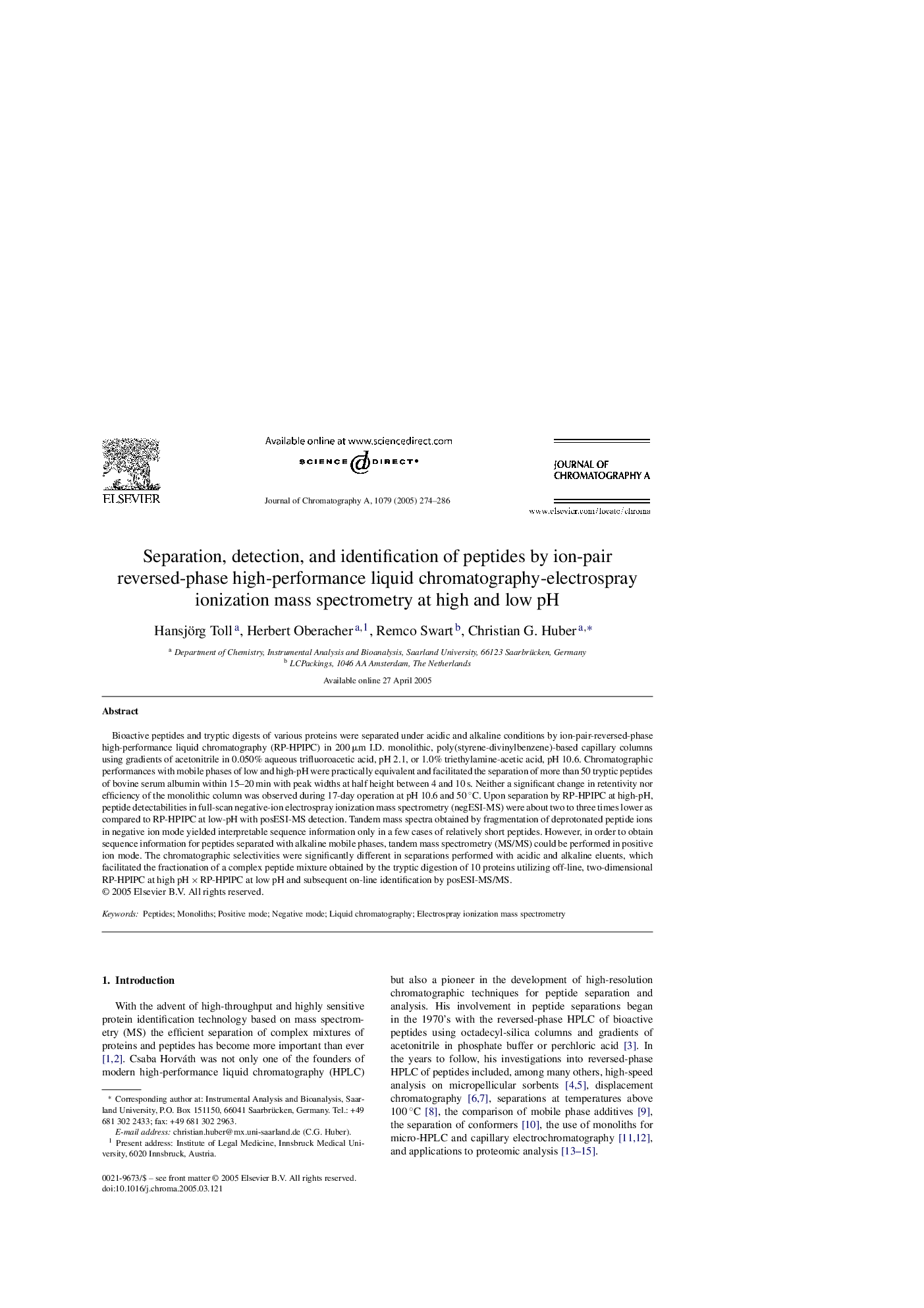| Article ID | Journal | Published Year | Pages | File Type |
|---|---|---|---|---|
| 9748964 | Journal of Chromatography A | 2005 | 13 Pages |
Abstract
Bioactive peptides and tryptic digests of various proteins were separated under acidic and alkaline conditions by ion-pair-reversed-phase high-performance liquid chromatography (RP-HPIPC) in 200 μm I.D. monolithic, poly(styrene-divinylbenzene)-based capillary columns using gradients of acetonitrile in 0.050% aqueous trifluoroacetic acid, pH 2.1, or 1.0% triethylamine-acetic acid, pH 10.6. Chromatographic performances with mobile phases of low and high-pH were practically equivalent and facilitated the separation of more than 50 tryptic peptides of bovine serum albumin within 15-20 min with peak widths at half height between 4 and 10 s. Neither a significant change in retentivity nor efficiency of the monolithic column was observed during 17-day operation at pH 10.6 and 50 °C. Upon separation by RP-HPIPC at high-pH, peptide detectabilities in full-scan negative-ion electrospray ionization mass spectrometry (negESI-MS) were about two to three times lower as compared to RP-HPIPC at low-pH with posESI-MS detection. Tandem mass spectra obtained by fragmentation of deprotonated peptide ions in negative ion mode yielded interpretable sequence information only in a few cases of relatively short peptides. However, in order to obtain sequence information for peptides separated with alkaline mobile phases, tandem mass spectrometry (MS/MS) could be performed in positive ion mode. The chromatographic selectivities were significantly different in separations performed with acidic and alkaline eluents, which facilitated the fractionation of a complex peptide mixture obtained by the tryptic digestion of 10 proteins utilizing off-line, two-dimensional RP-HPIPC at high pH Ã RP-HPIPC at low pH and subsequent on-line identification by posESI-MS/MS.
Keywords
Related Topics
Physical Sciences and Engineering
Chemistry
Analytical Chemistry
Authors
Hansjörg Toll, Herbert Oberacher, Remco Swart, Christian G. Huber,
